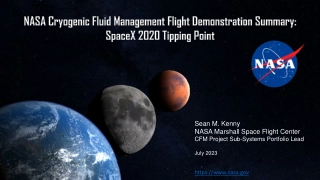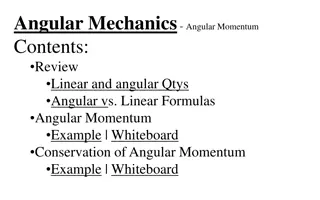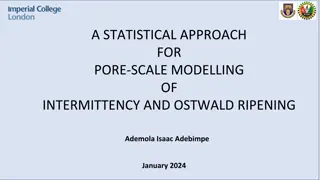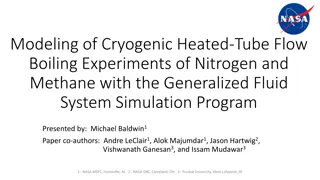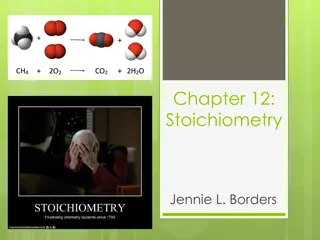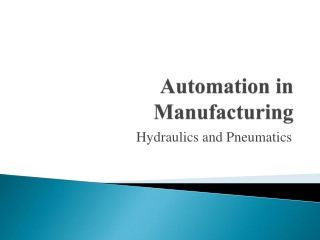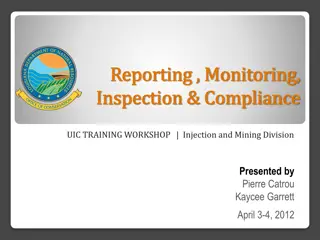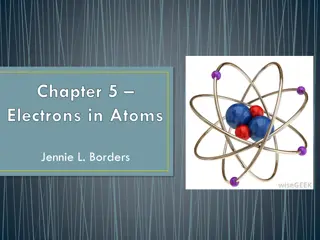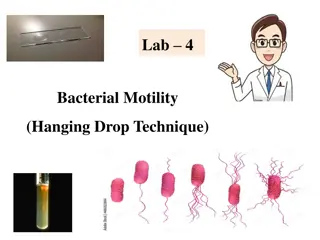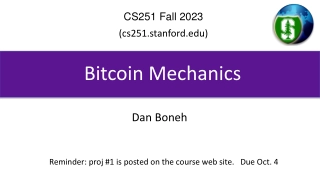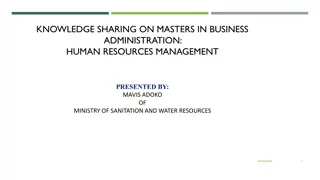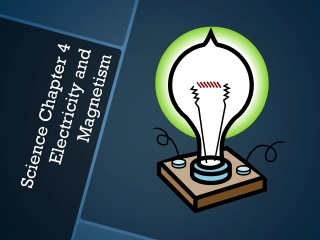Understanding Bernoulli's Equation in Fluid Mechanics
Bernoulli's equation, a fundamental principle in fluid dynamics, relates pressure, kinetic energy, and potential energy of a fluid flowing in a pipe. Through examples and explanations, explore how this equation can be used to calculate velocity, pressure differences, and forces in various scenarios involving fluids like water and air. Discover how Bernoulli's equation plays a role in explaining phenomena such as lift generation in airplane wings.
Download Presentation
Please find below an Image/Link to download the presentation.
The content on the website is provided AS IS for your information and personal use only. It may not be sold, licensed, or shared on other websites without obtaining consent from the author. Download presentation by click this link. If you encounter any issues during the download, it is possible that the publisher has removed the file from their server.
Presentation Transcript
Bernoullis Equation Contents: How to calculate Whiteboards
Bernoullis Equation: Derive 2 + + = + + 2 1 P gh v P gh v 1 1 1 1 2 2 2 2 2 P = Pressure in Pa = Density of fluid in kg m-3 g = 9.81 N kg-1 h = Height in m v = velocity in m/s
Bernoullis Equation: (The Data Packet)
Example Water with a density of 1000. kg m-3 pours from a very large tank of water from a pipe that is 34.0 m below the surface of the water. What is its velocity? gh= v2 gh = v2 v = (2gh) Torricelli's Law!!! (demo bucket with holes) 25.8 m/s
Example Air with a density of 1.29 kg m-3 flows at 2.00 m/s where a duct is 48.0 cm in diameter under a pressure of 1.00x105 Pa. What is the a. velocity and b. pressure when the pipe narrows to 12.0 cm? ( (0.242))(2) = ( (0.062))(v), v = 32.0 m/s P + v2= P + v2 1.00E5 + .5(1.29)(22) = P + .5(1.29)(322), P = 99,342.1 Pa How is it less? It has to be....why does it speed up/slow down? What is the molecule spacing? Standing waves in rivers Demo 2 papers, blowing over one paper, blower and water tube, blower and ball, flapping flags, waves (Kelvin-Helmholz instability ) airplane wings??? maybe not 32.0 m/s, 0.993E5Pa
myth Bernoullis equation explains all of how airplane wings generate lift. http://popphysics.com/chapter-4- fluid-mechanics/bernoullis- principle-and-airplanes/
Bernoulli 1-5
The wind is moving horizontally at 12.0 m/s over a level rectangular roof that measures 4.50 m by 8.00 m. A. What is the pressure difference between the bottom (still air) and the top (moving air) of the roof surface? Use 1.29 kg m-3 for the density of the air, neglect the change in height, and assume (if you need to) that the pressure underneath is 1.013x105 Pa. B. What is the net upward force on the roof? P = P + v2 so the difference is just v2 so the difference is .5(1.29)(122) = 92.88 Pa multiply this by the area of the roof to get the force. 92.9 Pa, 3340 N (751 lbs)
A very large Nitrogen tank is at 2000. PSI. If nitrogen at STP has a density of 1.17 kg m-3, how fast is the gas going if the valve breaks off when the tank is horizontal (assume P1 is 2000 PSI (convert), v1 is zero?, P2 is 1.013E5 Pa, solve for v2. Ignore change in height.) 1 atm = 14.7 PSI EC if the opening is 1.2 cm in diameter, what thrust does the tank develop? (??????) https://www.youtube.com/watch?v=f-xmaPSZ6GM https://www.youtube.com/watch?v=ejEJGNLTo84 P = P + v2 (2000/14.7)*1.013E5 = 1.013E5 + .5(1.17)v2 v = 4835.9 m/s 4840 m/s F = p/t = m v/t = (Av )v = 3094.6 N 3090 N 4835.9 or roughly 4840 m/s, 3090 N (695 lbs)
What pressure is needed in a fountain if it is spraying water straight up to a height of 23.2 m? What is the gauge pressure? = 1000. kg m-3, P2 = 1.013E5 Pa P = P + gh P = 1.013E5 + (1000)(9.81)(23.2) = 328,892 Pa 3.29E5 Pa 328,892 Pa 101,300 Pa = 2.28x105 Pa 3.29x105 Pa, 2.28x105 Pa
A water faucet breaks in the Physics room, spraying water upwards. If the gauge pressure in the water mains is 21.0 PSI, (at v = 0) with what speed does the water hit the ceiling 4.80 m above the faucet? How much time does it take a custodian to come down and fix the leak? = 1000. kg m-3, P2 = 1atm = 1.013E5 Pa. 1 atm = 14.7 PSI P = P + gh+ v2 (21.0+14.7)/14.7*1.013E5 = 1.013E5 + (1000)(9.81)(4.80) + .5(1000)v2 v = 13.973 m/s 14.0 m/s 14.0 m/s
Water flows at 2.00 m/s at an elevation of 1.50 m with a pressure of 1.15x105 Pa through a 10.0 cm diameter pipe. What is the pressure if it is at an elevation of 5.00 m going through a 6.00 cm diameter pipe? (Find the second speed first. = 1000. kg m-3) v = (10/6)2(2.00 m/s) = 5.55555 m/s P + gh+ v2 = P + gh+ v2 1.15E5 + (1000)9.81(1.50) + .5(1000)(2.00)2 = P + (1000)9.81(5.00) + .5(1000)(5.5555)2 P = 67,232.9 Pa 6.72E4 Pa 6.72x104 Pa






